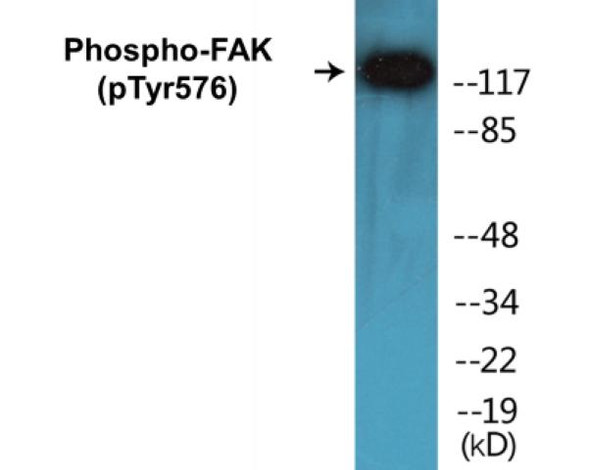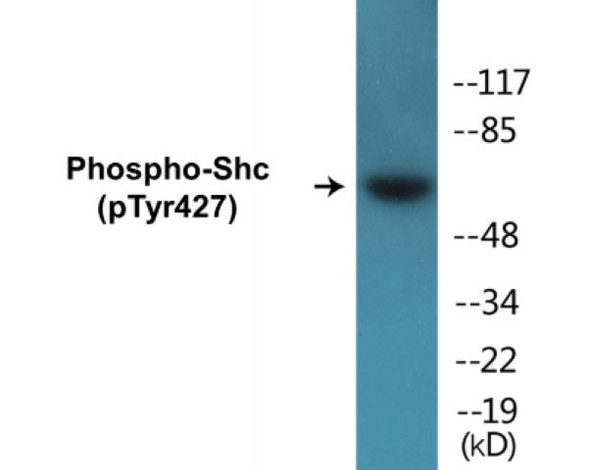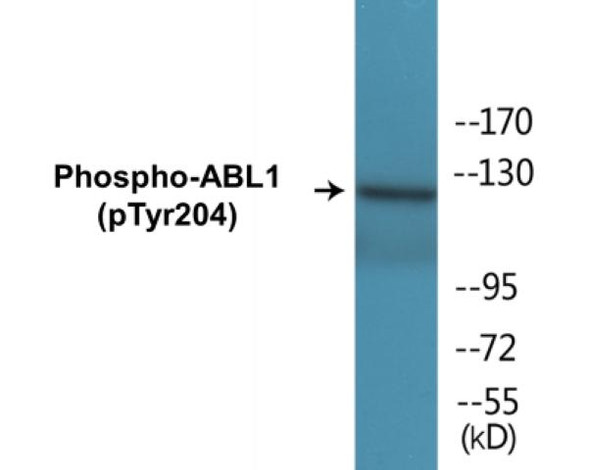TERF1 (Phospho-Ser219)Colorimetric Cell-Based ELISA Kit (CBCAB01486)
- SKU:
- CBCAB01486
- Product Type:
- ELISA Kit
- ELISA Type:
- Cell Based Phospho Specific
- Research Area:
- Cell Cycle
- Reactivity:
- Human
- Mouse
- Detection Method:
- Colorimetric
Description
TERF1 (Phospho-Ser219)Colorimetric Cell-Based ELISA Kit
The TERF1 (Telomeric Repeat Binding Factor 1) Phospho-Ser219 Colorimetric Cell-Based ELISA Kit is a cutting-edge tool designed for the precise measurement of TERF1 phosphorylation at serine 219 in cell lysates. This kit offers exceptional sensitivity and specificity, ensuring accurate and reproducible results for a variety of research applications.TERF1 is a key regulator of telomere maintenance and DNA replication, playing a crucial role in cellular senescence and genome stability.
Phosphorylation of TERF1 at serine 219 is known to modulate its function, making it a valuable marker for studying telomere biology and its implications in aging, cancer, and other age-related diseases.With this innovative kit, researchers can uncover new insights into the role of TERF1 phosphorylation in cellular processes and disease pathogenesis, paving the way for potential therapeutic advancements.
| Product Name: | TERF1 (Phospho-Ser219) Colorimetric Cell-Based ELISA |
| Product Code: | CBCAB01486 |
| ELISA Type: | Cell-Based |
| Target: | TERF1 (Phospho-Ser219) |
| Reactivity: | Human, Mouse |
| Dynamic Range: | > 5000 Cells |
| Detection Method: | Colorimetric 450 nm |
| Format: | 2 x 96-Well Microplates |
The TERF1 (Phospho-Ser219) Colorimetric Cell-Based ELISA Kit is a convenient, lysate-free, high throughput and sensitive assay kit that can detect TERF1 protein phosphorylation and expression profile in cells. The kit can be used for measuring the relative amounts of phosphorylated TERF1 in cultured cells as well as screening for the effects that various treatments, inhibitors (ie. siRNA or chemicals), or activators have on TERF1 phosphorylation.
Qualitative determination of TERF1 (Phospho-Ser219) concentration is achieved by an indirect ELISA format. In essence, TERF1 (Phospho-Ser219) is captured by TERF1 (Phospho-Ser219)-specific primary (1ø) antibodies while the HRP-conjugated secondary (2ø) antibodies bind the Fc region of the 1ø antibody. Through this binding, the HRP enzyme conjugated to the 2ø antibody can catalyze a colorimetric reaction upon substrate addition. Due to the qualitative nature of the Cell-Based ELISA, multiple normalization methods are needed:
| 1. | A monoclonal antibody specific for human GAPDH is included to serve as an internal positive control in normalizing the target absorbance values. |
| 2. | Following the colorimetric measurement of HRP activity via substrate addition, the Crystal Violet whole-cell staining method may be used to determine cell density. After staining, the results can be analysed by normalizing the absorbance values to cell amounts, by which the plating difference can be adjusted. |
| Database Information: | Gene ID: 7013, UniProt ID: P54274, OMIM: 600951, Unigene: Hs.442707 |
| Gene Symbol: | TERF1 |
| Sub Type: | Phospho |
| UniProt Protein Function: | TRF1: a telomeric repeat binding factor. Binds the telomeric double-stranded TTAGGG repeat and negatively regulates telomere length. Colocalizes with telomeric DNA in interphase and metaphase cells and is located at chromosome ends during metaphase. Involved in the regulation of the mitotic spindle. Expression is tightly regulated during the cell cycle; levels are low in G1 and S phase and increase during G2 phase and mitosis. Two splice variant isoforms have been described. |
| UniProt Protein Details: | Protein type:DNA-binding Chromosomal Location of Human Ortholog: 8q21.11 Cellular Component: nucleoplasm; chromosome, telomeric region; nuclear telomere cap complex; nuclear chromosome, telomeric region; cytoplasm; nucleolus; spindle; nucleus Molecular Function:protein binding; protein homodimerization activity; DNA binding; protein heterodimerization activity; microtubule binding; telomeric DNA binding; double-stranded telomeric DNA binding; chromatin binding; DNA bending activity Biological Process: response to drug; mitosis; positive regulation of mitosis; negative regulation of telomere maintenance via semi-conservative replication; positive regulation of apoptosis; positive regulation of microtubule polymerization; telomere maintenance via telomerase; positive regulation of mitotic cell cycle; negative regulation of telomerase activity; cell division; negative regulation of DNA replication; telomeric loop formation; mitotic cell cycle spindle assembly checkpoint; age-dependent telomere shortening; G2/M transition of mitotic cell cycle; negative regulation of telomere maintenance via telomerase; telomere maintenance; protein homooligomerization |
| NCBI Summary: | This gene encodes a telomere specific protein which is a component of the telomere nucleoprotein complex. This protein is present at telomeres throughout the cell cycle and functions as an inhibitor of telomerase, acting in cis to limit the elongation of individual chromosome ends. The protein structure contains a C-terminal Myb motif, a dimerization domain near its N-terminus and an acidic N-terminus. Two transcripts of this gene are alternatively spliced products. [provided by RefSeq, Jul 2008] |
| UniProt Code: | P54274 |
| NCBI GenInfo Identifier: | 206729904 |
| NCBI Gene ID: | 7013 |
| NCBI Accession: | P54274.3 |
| UniProt Secondary Accession: | P54274,Q15553, Q8NHT6, Q93029, A7XP29, |
| UniProt Related Accession: | P54274 |
| Molecular Weight: | 439 |
| NCBI Full Name: | Telomeric repeat-binding factor 1 |
| NCBI Synonym Full Names: | telomeric repeat binding factor (NIMA-interacting) 1 |
| NCBI Official Symbol: | TERF1 |
| NCBI Official Synonym Symbols: | TRF; PIN2; TRF1; TRBF1; t-TRF1; hTRF1-AS |
| NCBI Protein Information: | telomeric repeat-binding factor 1; NIMA-interacting protein 2; telomeric protein Pin2/TRF1; TTAGGG repeat-binding factor 1 |
| UniProt Protein Name: | Telomeric repeat-binding factor 1 |
| UniProt Synonym Protein Names: | NIMA-interacting protein 2; TTAGGG repeat-binding factor 1; Telomeric protein Pin2/TRF1 |
| Protein Family: | Telomeric repeat-binding factor |
| UniProt Gene Name: | TERF1 |
| UniProt Entry Name: | TERF1_HUMAN |
| Component | Quantity |
| 96-Well Cell Culture Clear-Bottom Microplate | 2 plates |
| 10X TBS | 24 mL |
| Quenching Buffer | 24 mL |
| Blocking Buffer | 50 mL |
| 15X Wash Buffer | 50 mL |
| Primary Antibody Diluent | 12 mL |
| 100x Anti-Phospho Target Antibody | 60 µL |
| 100x Anti-Target Antibody | 60 µL |
| Anti-GAPDH Antibody | 60 µL |
| HRP-Conjugated Anti-Rabbit IgG Antibody | 12 mL |
| HRP-Conjugated Anti-Mouse IgG Antibody | 12 mL |
| SDS Solution | 12 mL |
| Stop Solution | 24 mL |
| Ready-to-Use Substrate | 12 mL |
| Crystal Violet Solution | 12 mL |
| Adhesive Plate Seals | 2 seals |
The following materials and/or equipment are NOT provided in this kit but are necessary to successfully conduct the experiment:
- Microplate reader able to measure absorbance at 450 nm and/or 595 nm for Crystal Violet Cell Staining (Optional)
- Micropipettes with capability of measuring volumes ranging from 1 µL to 1 ml
- 37% formaldehyde (Sigma Cat# F-8775) or formaldehyde from other sources
- Squirt bottle, manifold dispenser, multichannel pipette reservoir or automated microplate washer
- Graph paper or computer software capable of generating or displaying logarithmic functions
- Absorbent papers or vacuum aspirator
- Test tubes or microfuge tubes capable of storing ≥1 ml
- Poly-L-Lysine (Sigma Cat# P4832 for suspension cells)
- Orbital shaker (optional)
- Deionized or sterile water
*Note: Protocols are specific to each batch/lot. For the correct instructions please follow the protocol included in your kit.
| Step | Procedure |
| 1. | Seed 200 µL of 20,000 adherent cells in culture medium in each well of a 96-well plate. The plates included in the kit are sterile and treated for cell culture. For suspension cells and loosely attached cells, coat the plates with 100 µL of 10 µg/ml Poly-L-Lysine (not included) to each well of a 96-well plate for 30 minutes at 37 °C prior to adding cells. |
| 2. | Incubate the cells for overnight at 37 °C, 5% CO2. |
| 3. | Treat the cells as desired. |
| 4. | Remove the cell culture medium and rinse with 200 µL of 1x TBS, twice. |
| 5. | Fix the cells by incubating with 100 µL of Fixing Solution for 20 minutes at room temperature. The 4% formaldehyde is used for adherent cells and 8% formaldehyde is used for suspension cells and loosely attached cells. |
| 6. | Remove the Fixing Solution and wash the plate 3 times with 200 µL 1x Wash Buffer for five minutes each time with gentle shaking on the orbital shaker. The plate can be stored at 4 °C for a week. |
| 7. | Add 100 µL of Quenching Buffer and incubate for 20 minutes at room temperature. |
| 8. | Wash the plate 3 times with 1x Wash Buffer for 5 minutes each time. |
| 9. | Add 200 µL of Blocking Buffer and incubate for 1 hour at room temperature. |
| 10. | Wash 3 times with 200 µL of 1x Wash Buffer for 5 minutes each time. |
| 11. | Add 50 µL of 1x primary antibodies Anti-TERF1 (Phospho-Ser219) Antibody, Anti-TERF1 Antibody and/or Anti-GAPDH Antibody) to the corresponding wells, cover with Parafilm and incubate for 16 hours (overnight) at 4 °C. If the target expression is known to be high, incubate for 2 hours at room temperature. |
| 12. | Wash 3 times with 200 µL of 1x Wash Buffer for 5 minutes each time. |
| 13. | Add 50 µL of 1x secondary antibodies (HRP-Conjugated AntiRabbit IgG Antibody or HRP-Conjugated Anti-Mouse IgG Antibody) to corresponding wells and incubate for 1.5 hours at room temperature. |
| 14. | Wash 3 times with 200 µL of 1x Wash Buffer for 5 minutes each time. |
| 15. | Add 50 µL of Ready-to-Use Substrate to each well and incubate for 30 minutes at room temperature in the dark. |
| 16. | Add 50 µL of Stop Solution to each well and read OD at 450 nm immediately using the microplate reader. |
(Additional Crystal Violet staining may be performed if desired – details of this may be found in the kit technical manual.)






